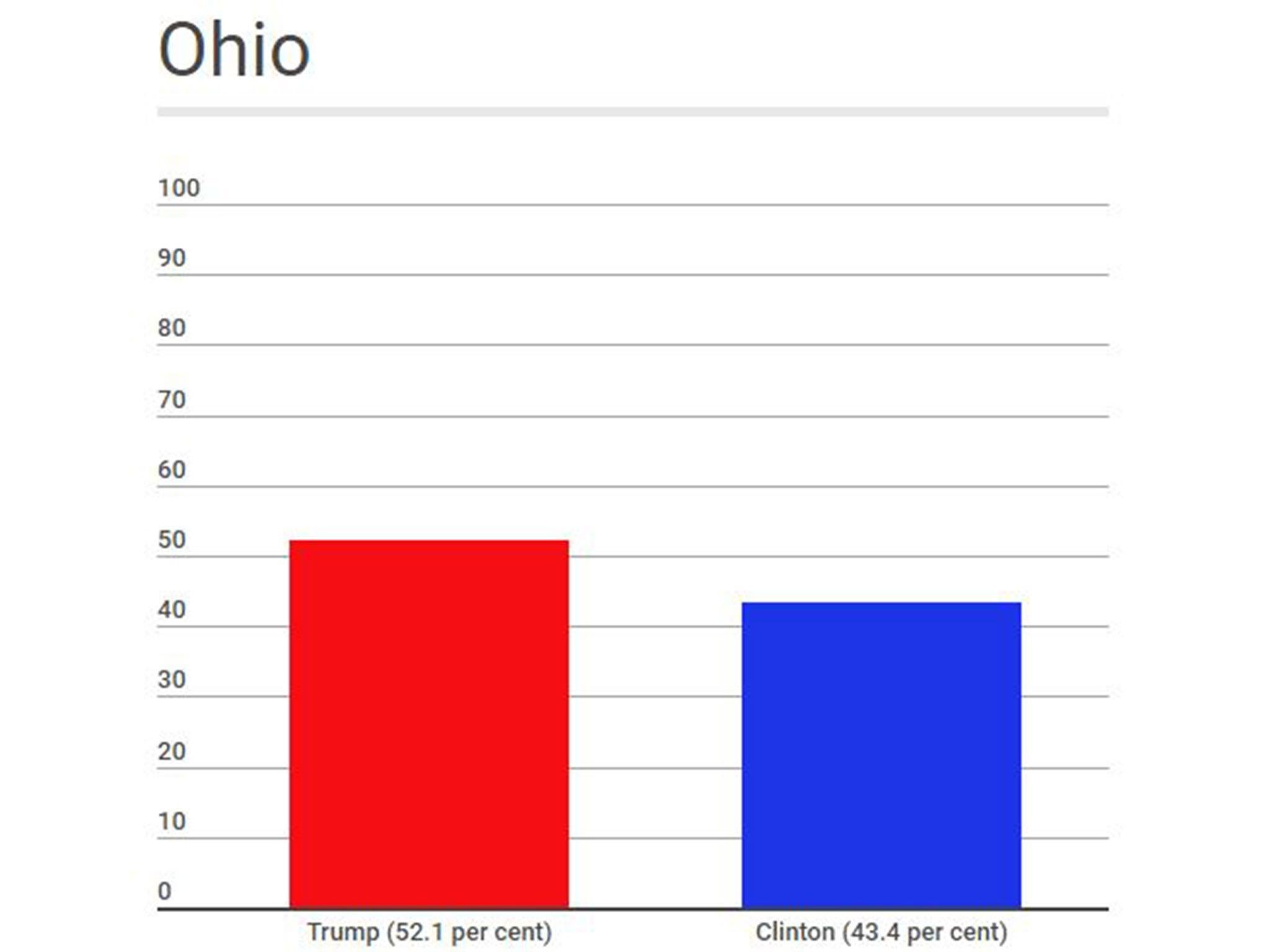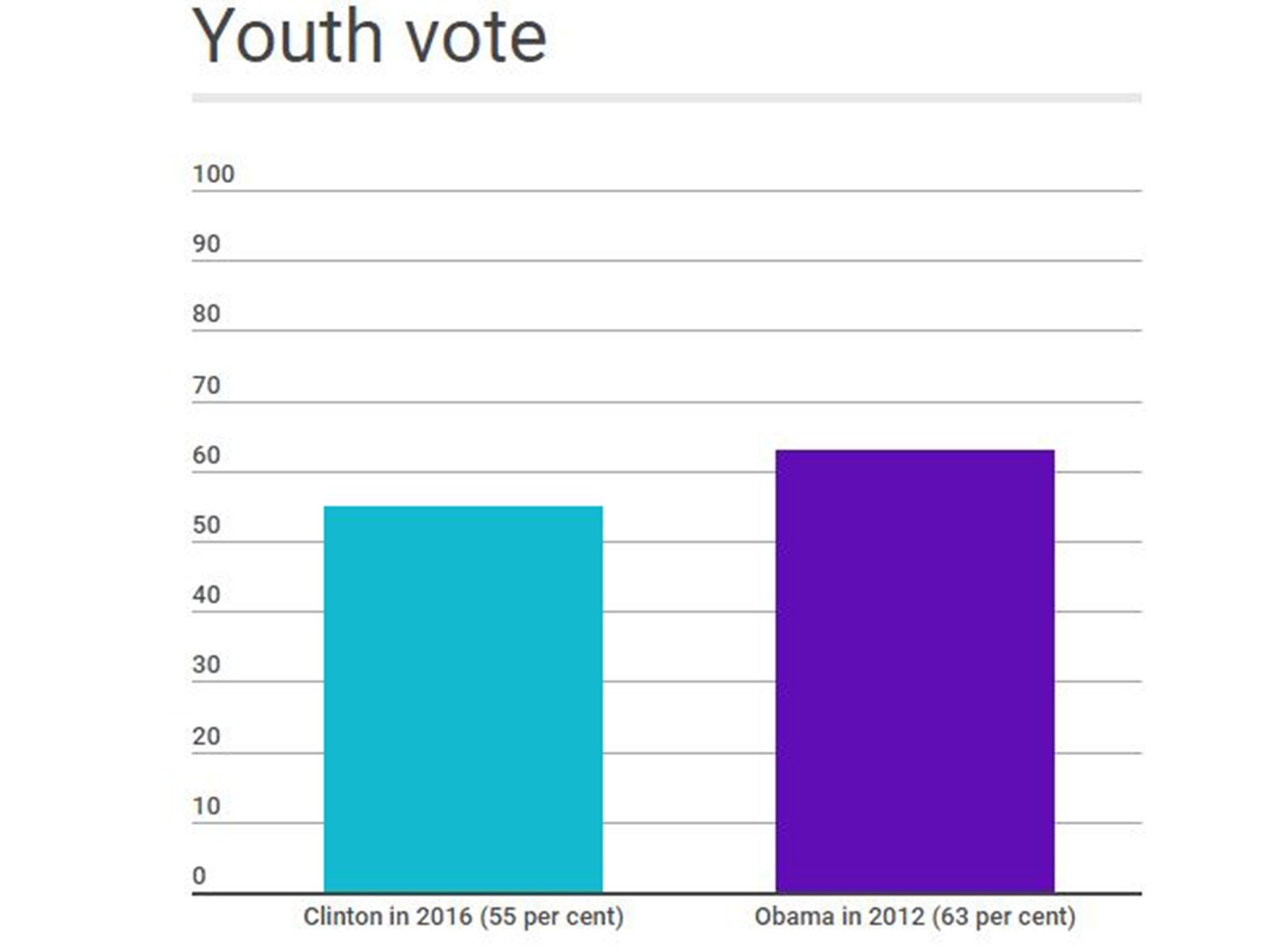6 charts that explain how Donald Trump won the most incredible election in US history
After months of pre-election polls placing Clinton ahead, Trump swept to victory and has become the most powerful man in the world

Your support helps us to tell the story
From reproductive rights to climate change to Big Tech, The Independent is on the ground when the story is developing. Whether it's investigating the financials of Elon Musk's pro-Trump PAC or producing our latest documentary, 'The A Word', which shines a light on the American women fighting for reproductive rights, we know how important it is to parse out the facts from the messaging.
At such a critical moment in US history, we need reporters on the ground. Your donation allows us to keep sending journalists to speak to both sides of the story.
The Independent is trusted by Americans across the entire political spectrum. And unlike many other quality news outlets, we choose not to lock Americans out of our reporting and analysis with paywalls. We believe quality journalism should be available to everyone, paid for by those who can afford it.
Your support makes all the difference.Donald Trump has won the election after the most remarkable result in US presidential history. The Republican candidate swept to victory in key swing states including Florida to beat Democrat rival Hillary Clinton. The surprise result defied months of polls which predicted victory for Clinton. Data available begins to paint a picture of how Trump managed to win the election' he began the race as an outsider discredited for his lack of experience before convincing the Republican party and then the nation of his abilities.
During the televised TV debates, Trump managed to suppress a backlash after explicit and offensive comments he made regarding women, which had initially threatened to derail his campaign. According to exit polls and results data, he appears to have successfully wooed key swing states and also fought off Clinton's attempts to win the youth vote. Young voters are much more likely to vote Democrat than Republican, however Clinton got just 55 per cent of the youth vote comapred to the 63 per cent her predecessor Obama garnered. Similarly, contrary to predictions women would support Clinton as the first female presidential candidate, white women were considerably more likely to vote Trump, helping push him to victory.

As results came in for key swing state Florida early on, the very real prospect of a Trump success became apparent. He beat Clinton by a tiny margin of 2.4 per cent, aided by a split of the left-wing vote which saw a crucial 3.1 per cent of votes go to liberal candidate Gary Johnson. History may remember the moment Clinton lost Florida as the moment she lost.

Another key state for Trump to win was Ohio. Demographics for the state are in his favour, with the local population being whiter and less education on average than the rest of the country. The state previously supported Obama by 48 per cent, but his Democratic successor Clinton failed to win voters’ support. Trump beat Clinton by a country mile, gaining close to a 10-point lead.

Trump soared to victory here, beating Clinton 51.3 per cent to her 45.9 per cent. The traditional white Republican state has a history of supporting GOP candidates but it was feared Trump would be seen as too far a break from traditional candidates. However, the connected results show his campaign succeeded in winning round traditional Republican voters in the end.

The state has been historically a solid Democrat safe seat. It is primarily white and highly educated. However, voters did not connect with Clinton’s message and instead plumped for Trump with 49.3 per cent of votes, compared to Clinton’s 45.6 per cent.

Exit polls suggest Clinton did not succeed in winning the youth vote, to the extent that her predecessor did. Fifty-five per cent of young people aged 18-29 supported her, far short of the 63 per cent support which contributed to Obama's victory in 2012.
While the election will be remembered for many reasons, one of the most historic aspects of the race was the fact that it was the closest a woman has ever come to getting the top spot in the White House. In addition, graphic and offensive comments made by Trump about women during the campaign threatened to derail his campaign last month after footage emerged of him discussing touching women inappropriately. In light of these aspects, many female voters were expected to flock to Clinton, however this does not appear to have materialised among white women who supported Trump by a significant margin.

For updates, follow The Independent's election live blog here
Join our commenting forum
Join thought-provoking conversations, follow other Independent readers and see their replies
Comments